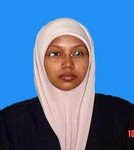Facts about the Number Seven
>> Tuesday, August 25, 2009







Mathematical Facts about the Number Seven
-Seven has the highest probability of occurring as an addition when rolling dice.
-The number seven is the fourth prime number as also a Mersenne prime, the first Woodall prime, the fourth factorial prime, the second lucky and the second safe prime.
-Seven is the only number below 15 that cannot be represented as a sum of the squares of three integers. Wondering all other numbers can be represented? You will have to check out and see!
-7 is a Prime Number.
-7 is a Mersenne Number.
-7 is an Octahedral Number.
-7 is a Lucas Number.
-7 is a Centered Hexagonal Number.
-7 is a Heptagonal Number.
-7 is a Hexagonal Pyramidal Number.
-5 can be Partitioned in 7 ways.
-7 can be Partitioned in 15 ways.
-7 is the number of + signs needed to write the Partitions of 4
-Sum of the first 4 Fibonacci numbers= 1 + 1 + 2 + 3 = 7
-7 is the number of frieze groups, i.e., the groups consisting of symmetries of the plane whose group of translations is isomorphic to the group of integers.
-7 is the maximal number of regions into which 3 lines divide a plane.
-The 7 Hexagonal (6-fold) crystal classes.
-The 7 Tetragonal crystal classes.
-Topologists have been able to prove that 7 colors may be needed on a donut shaped map to ensure that no adjacent areas are the same.
-There are seven different ways of linking four hexagons together.
-7 is the smallest number of integer-sided rectangles that tile a rectangle so that no 2 rectangles share a common length.
Interesting Facts about the Number Seven
-The Chemical Element Nitrogen has an atomic number of 7.
-The 7 directions: north, south, east, west, up, down and the center.
-In Humans: the 7 Endocrine glands.
-The 7 colors of the rainbow.
-There are seven wonders of the ancient world.
-There are seven continents in the world.
-There are seven colors of the rainbow. Their names are famously abbreviated as 'vibgyor'.
-There are seven days in a week.
-One of the most interesting facts about the number seven is its correlation with the cognitive abilities of a human being. The limits of human cognitive capacity lie within the range of 7 plus or a minus 2.
-There are seven basic musical notes, namely, 'do', 're', 'me', 'fa', 'so', 'la' and 'te'. In Indian music they are ‘sa’, ‘re’, ‘ga’, ‘ma’, ‘pa’, ‘dha’ and ‘ni’.
Facts about the Number Seven in Science and Technology
-A ladybug commonly has seven spots!
-Most of the mammals' necks have seven bones.
-The number of rows in the periodic table is seven.
-The neutral pH value that lies between acidity and alkalinity is seven.
-The code for international direct dial phone calls to Russia and Kazakhstan is seven. Seven is also the number of digits in an American or a Canadian telephone number.
-Digital devices use a seven-segment display.
-The OSI model has seven layers.
-There are seven logic gates namely, NOT, NOR, XNOR, XOR, AND, NAND and OR.







